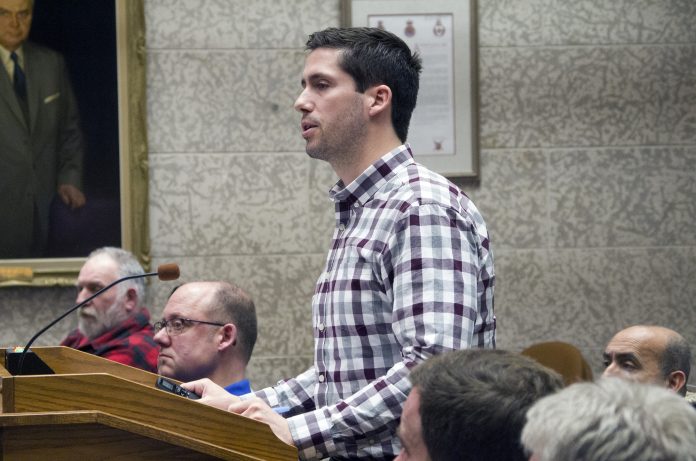
City council is looking to Saskatoon for options on how to replace the hundreds of lead service connectors used in Prince Albert’s water distribution system.
According to a report presented to council on Monday, there is an estimated 750 such connectors still owned by the city, but the real challenge comes from the unknown number of private ones.
In February 2017, the City of Saskatoon began the Lead and Water Main Pipe Replacement Program with the goal of replacing all lead service connectors within a decade. Now, city officials in Prince Albert are looking at doing something similar, the only question is whether it will be mandatory for Prince Albert residents.
Jeff Da Silva, the city’s engineering services manager, said there is a lot of research showing that partial replacements actually increase corrosion, and cost of footing the bill for all of Prince Albert’s property owners comes with some problems.
“There is currently no requirement or funding for the replacement of the privately owned portion of the service,” he said. “When dealing with lead services, the administration faces a few challenges.”
Lead service connectors link municipal and commercial properties to the city’s main water network. Property owners are responsible for maintaining those connectors right up to the property line, and just a partial replacement can cost the city anywhere from $12,000 to $20,000.
In the past, residents were offered a $2,000 incentive to complete the work on their own property, however Da Silva said that measure ended in 2010.
Council has not made any final decisions on whether the replacement program will be optional, but there was still some debate on the subject during Monday’s executive committee meeting.
Ward 8 Coun. Ted Zurakowski came out strongly against the idea of forcing property owners to get the work done. Instead, he wants administrators to explore other options, since owners should have the final say in what happens on their side of the property line.
“I’m certainly not in favour of any mandatory work,” he said. “The city’s not going to come on to my property to tell me what to do (with it.)”
While not completely in favour of a mandatory program, Ward 2 Coun. Terra Lennox-Zepp did express some support for it. She said if the city has already spent money digging up streets to work on water mains and publicly owned lead connectors, it just makes since to work on private connectors too.
“It’s a bigger issue for the community, and if we’ve already done the work of opening up the street, it may make a lot of sense to make it mandatory,” she explained.
There are other options to replacing the lead pipes, but city administrators say those measures are only temporary. It is possible to add phosphate to Prince Albert’s drinking water, which would inhibit corrosion and leaching. Filters could also be used to minimize the impact, however, Da Silva and water treatment plant manager Andy Busse emphasized that both options were not advisable long-term.
Da Silva added that the North Saskatchewan River is not a source of lead, nor is the city’s water treatment centre. According to Health Canada, the maximum acceptable concentration of lead in water is 0.010 mg/L.
Administrators are struggling to find out just how many privately owned lead connectors the city has. Their efforts have been hampered by an incomplete database, which stretches more than 100 years and contains considerable gaps as to where upgrades were made.
“As lead services have been replaced over the years, there hasn’t been accurate tracking of what’s still in the ground on the private side,” Da Silva explained.
Typically the city replaces between 10 and 40 publicly owned lead service connectors per year. To replace all public connectors at once would cost about $12 million.
In 2016 the federal government budgeted $2 billion for the Clean Water and Wastewater Fund (CWWF) with the intention of accelerating short-term municipal investment in water infrastructure. The City of Saskatoon was able to draw $15.8 million from the CWWF for their 2017 project, along with $7.9 million from the provincial government. Replacing lead connectors was just one aspect of the $31.6 million project.
@kerr_jas • jason.kerr@paherald.sk.ca

